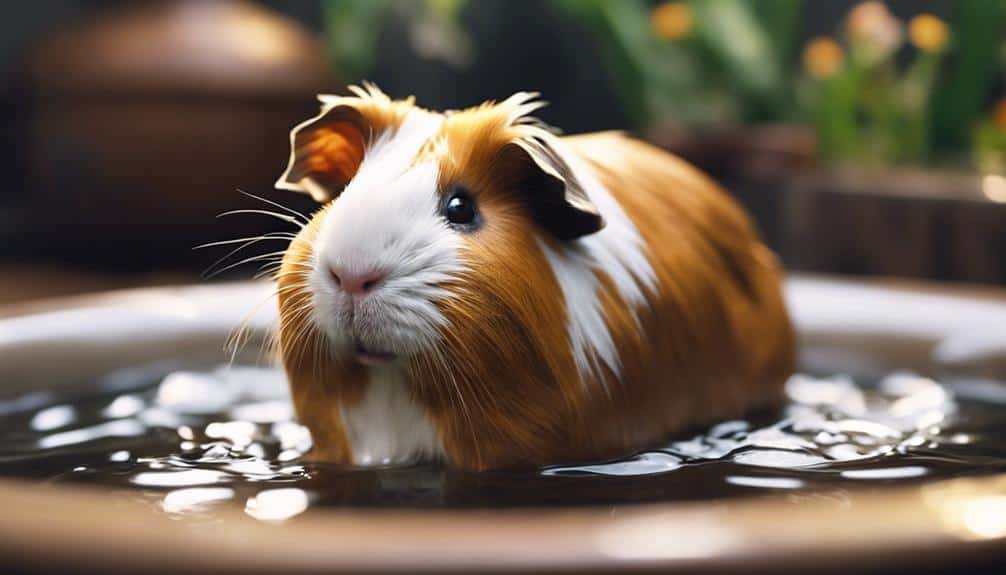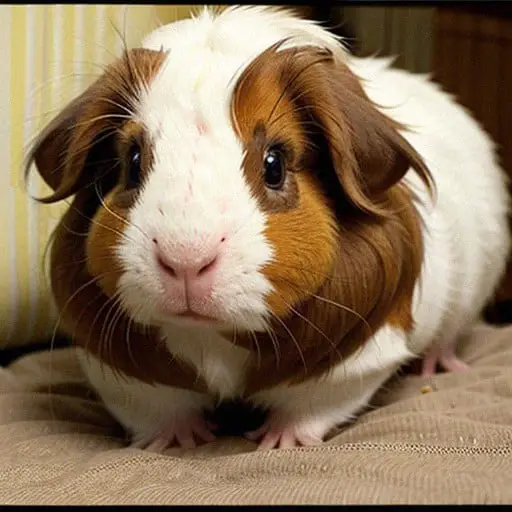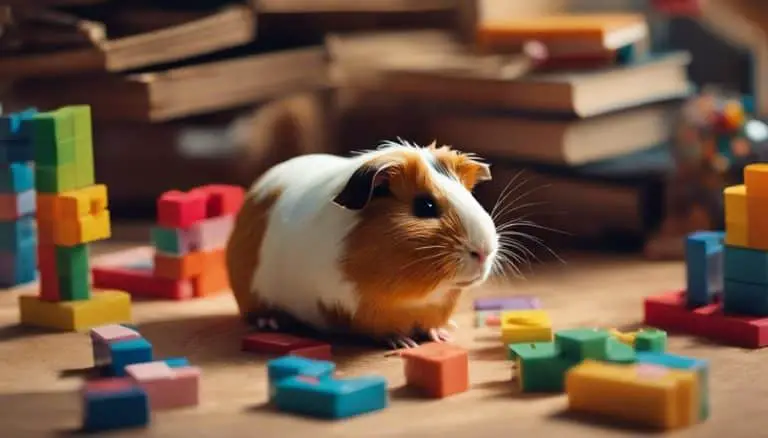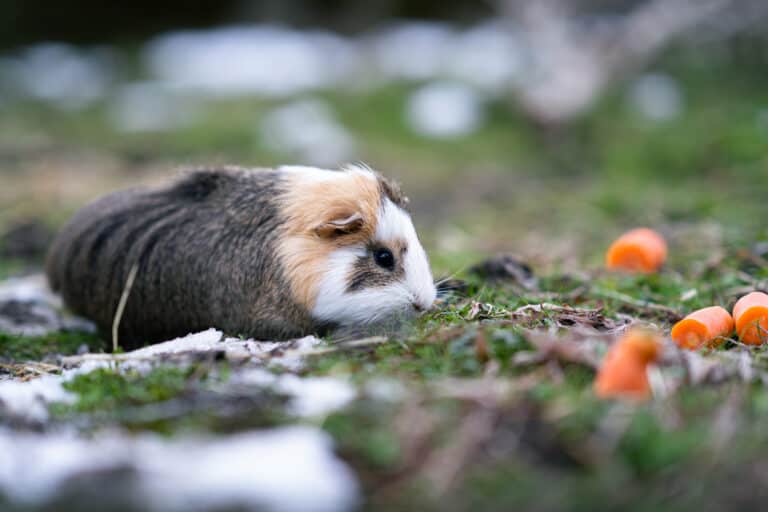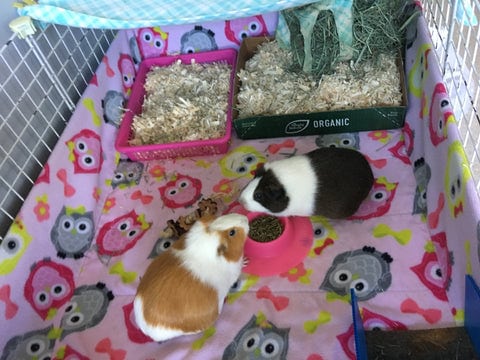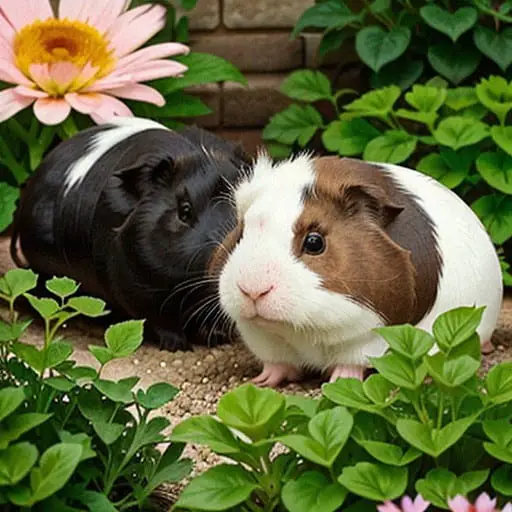How Do Guinea Pigs Need Baths: A Comprehensive Guide
When it comes to guinea pigs, the idea of bathing them might seem contradictory at first glance; however, guaranteeing their hygiene is essential for their well-being.
But how exactly should one approach this seemingly delicate task? Let’s explore the nuances of bathing guinea pigs, from frequency to techniques, to guarantee their health and comfort.
Let’s uncover the secrets behind giving your furry friends the care they deserve.
How Often Should Guinea Pigs Be Bathed?
When caring for guinea pigs, it’s essential to maintain their cleanliness through bathing, but determining the right frequency is important to prevent skin issues and stress. Guinea pigs need baths 2 to 4 times a year to keep them clean without causing skin problems. Over-bathing can lead to dry skin and stress in these delicate pets, so it’s important to follow a proper schedule.
Factors such as age, health conditions, and hair length can influence how often bathing is necessary for guinea pigs. Bathing should only be done when needed, like when they’re dirty, smelly, or experiencing specific skin or fur issues. It’s crucial to follow what the vet recommends regarding the frequency of baths to guarantee the well-being of the guinea pig.
Essential Bathing Supplies for Guinea Pigs
To guarantee a safe and effective bathing experience for your guinea pig, it’s important to gather the necessary supplies beforehand. Essential supplies for a successful guinea pig bath include guinea pig-friendly shampoo, towels, a plastic jug for rinsing, a non-slip surface to prevent accidents, and a hairdryer for optional drying.
When bathing your guinea pig, using a sink or wash basin with a flat surface and placing a towel as a non-slip base are important for their safety and comfort. After the bath, it’s recommended to use microfiber towels for drying to make sure your guinea pig is completely dry and warm. Additionally, using a bath thermometer can help monitor the water temperature, making sure it’s safe and comfortable for your guinea pig.
Having these supplies ready before bath time is important for a stress-free experience and the well-being of your furry companion.
Proper Bathing Technique for Guinea Pigs
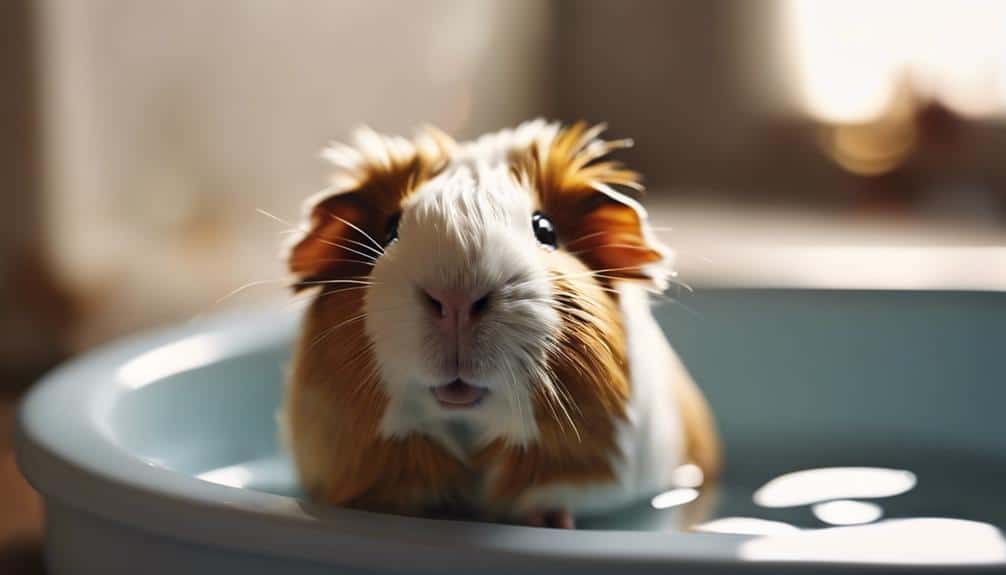
For a successful guinea pig bathing experience, it’s important to follow a proper bathing technique that guarantees their well-being and comfort.
- Use Lukewarm Water: Begin by filling a shallow basin with lukewarm water to bathe your guinea pig. Avoid using cold water, as it can secure their body temperature and cause discomfort.
- Gentle Shampooing: When shampooing your guinea pig, be sure to avoid the head area and use a small animal shampoo specifically designed for guinea pigs. This will help prevent skin irritation and keep your pet’s coat clean and healthy.
- Thorough Rinse and Pat Dry: After shampooing, thoroughly rinse your guinea pig to remove all traces of shampoo from their fur. Once rinsed, gently pat them dry with a soft towel. Avoid using a hairdryer on high settings and secure complete dryness before returning them to their cage to prevent health issues.
Following these steps will secure a safe and comfortable bathing experience for your guinea pig, keeping them clean and happy.
Tips for Handling Wriggly Guinea Pigs
Handling wriggly guinea pigs during bath time requires remaining calm and gentle, anticipating potential escape attempts, and providing a secure and soothing environment. When bathing a guinea pig, keep your furry friend feeling safe and secure. Start by speaking softly and using gentle strokes to reassure them.
To keep your guinea pig clean, use a small amount of guinea pig shampoo or a mild, small pet shampoo, being careful to avoid their eyes and ears. Make sure to keep the water at a lukewarm temperature, as guinea pigs are sensitive to extreme temperatures. If your guinea pig becomes particularly wriggly, a ‘bum bath’ – focusing on just cleaning their rear end – may be a quick and effective solution.
Remember to give your guinea pig treats like lettuce or cucumber to distract and calm them during the process. By following these tips, you can make bathing a guinea pig a more manageable and stress-free experience.
Maintaining Guinea Pigs’ Cleanliness and Health
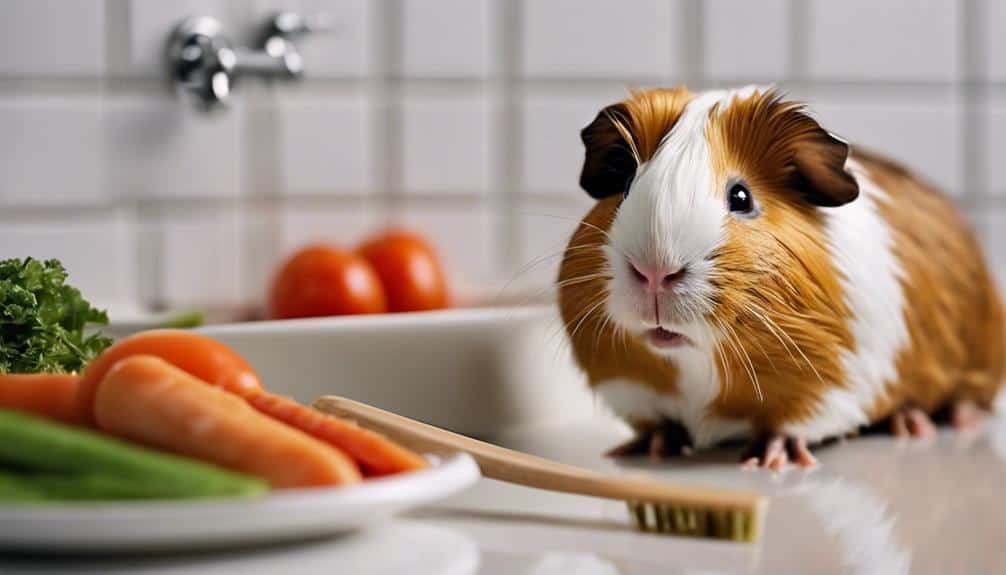
Maintaining the cleanliness and health of guinea pigs is essential for their overall well-being and comfort. When considering how to bathe guinea pigs, it’s important to keep in mind that these delicate pets have sensitive skin and bathing them too frequently can lead to skin irritation and stress. Here are some key points to help you maintain your guinea pig’s cleanliness and health:
- Limit Baths: Guinea pigs need baths only when necessary to prevent skin issues and unnecessary stress.
- Regular Grooming: Implementing a routine of regular grooming and spot cleaning can reduce the frequency of baths needed for your guinea pig.
- Post-Bath Care: After bathing your guinea pig, ensure proper post-bath care by monitoring for any signs of skin irritation and maintaining a warm environment to prevent chills.
Conclusion
To sum up, ensuring the cleanliness and health of your guinea pigs through proper bathing techniques is essential for their well-being.
By following the guidelines outlined in this detailed guide, you can maintain their hygiene without causing them unnecessary stress.
Remember, a clean guinea pig is a happy guinea pig!
So, grab those bathing supplies and give your furry friends the spa treatment they deserve.

